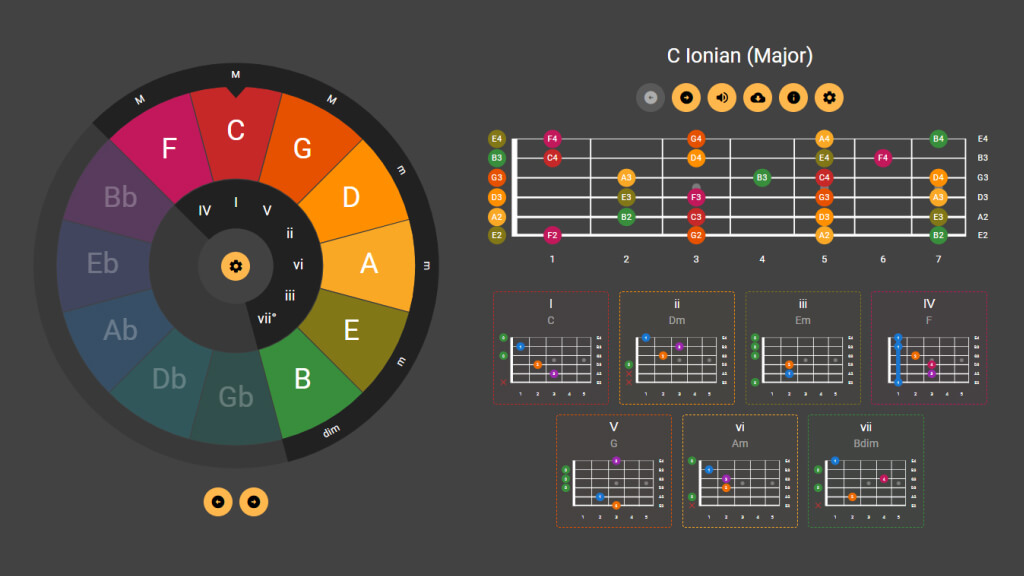Formula and Structure of the Fm6 Chord
Interval formula from the root note: 1 — b3 — 5 — 6. The chord consists of the following notes:
- F — unison and the main tonal anchor.
- Ab — minor third with a melancholic character and gentle lyricism.
- C — perfect fifth, stabilizing the triad and adding tonal grounding.
- D — major sixth with a warm upper hue, pairing with the 9 to form a soft 6/9 tonic.
Together, these notes form the harmonic foundation of the Fm6 chord, defining its sound and role in the musical context.
Alternative Names for the Fm6 Chord
There are no alternative names for this chord.
Using the Fm6 Chord
Keep the 6 in the top voice for a gentle glow. Separate 6 and b3 into different parts to avoid muddy mids. Combine with 9 for a 6/9 tint and smooth arpeggios. In bossa nova and soul the 6 -> maj7 -> 6 melodic move works beautifully. Avoid the major 7 in the low register and don’t overload the bass.
Conclusion
Fm6 is an expressive and versatile chord. Learn several fingerings, experiment with different positions and voice spacing, then try weaving it into your own playing — this will help you quickly find your unique tone.




![[Aladdin] A Whole New World — Alan Menken (Fingerstyle Guitar Cover)](https://dmitrypimonov.com/api/files/a2d9df16-1208-460f-bbab-f06fa3952398/content/1920/1080/medium.jpg)








